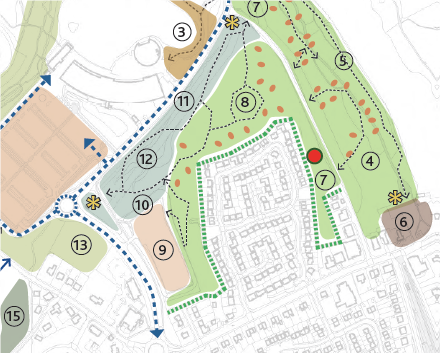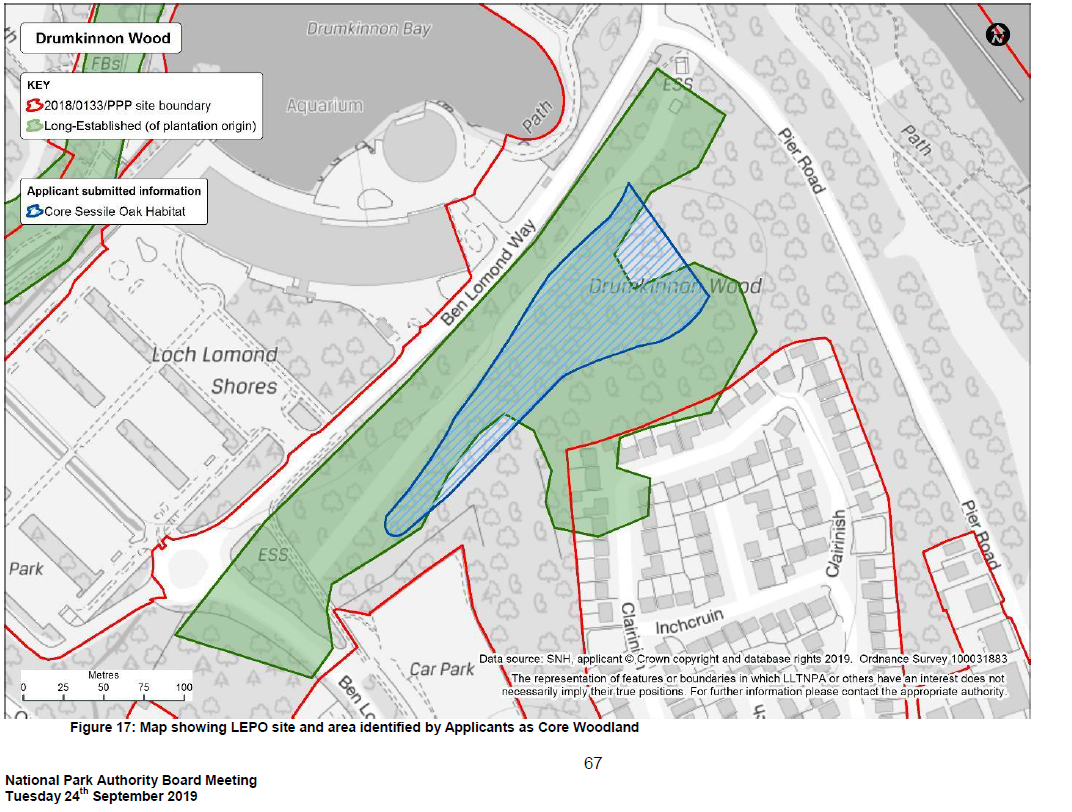Today Scottish Enterprise and Flamingo Land issued a joint news release (see here for full text) announcing they had withdrawn their planning application for “Lomond Banks” at Balloch, which was due to be considered by the Loch Lomond and Trossachs National Park Authority Board next week. The news release makes it clear this is only a temporary reprieve and the two partners hope to submit a (slightly) modified application in future. This is nonetheless a victory for campaigners who effectively forced LLTNPA senior staff, who have long backed the application, to recommend to their Board it should be refused. This post takes a look at what the news release tells us about what is likely to happen next.
Can our public authorities be trusted going forward?
The news release contains information which proves that its not just Andy Miller from Flamingo Land (see here) but both the Loch Lomond and Trossachs National Park Authority and Scottish Enterprise continue to misinform the public about the proposed development:
- “In 2016 Scottish Enterprise, in partnership with Loch Lomond and Trossachs National Park Authority (LLTNPA), promoted the remainder of SE’s landholding at West Riverside for tourism development”.
Note the “in partnership”. This further confirms (see here) that the claim made in the Board Report that the involvement of the LLTNPA was in an advisory capacity “in relation to tourism considerations and separate from, and without prejudice to, any consideration of planning issues” was basically a lie. Scottish Enterprise clearly feel they have been led down the garden path by LLTNPA staff. That has not prevented them, however, from repeating Andy Miller’s claim that the land on the Riverside site is derelict
- “Allan McQuade, Director, Scottish Enterprise, said: “Any proposed plan and investment of this scale must be considered from all angles and subsequent planning and investment decisions based on hard evidence and fact therefore it is only right that the current planning application be withdrawn to allow sufficient time for all parties to consider additional new information.
“As with previous developments at Loch Lomond, we understand people are concerned and our priority is to ensure that any development on the parcel of derelict land in Balloch is delivered in line with planning policy.”
FACT: its far more than a “parcel of land” and its not “derelict” – as Scottish Enterprise should know as they arranged the landscaping!
- “Development at West Riverside and Woodbank is to be named ‘Lomond Banks’ and is supported by the Local Development Plan which identifies the area for “Mixed Use Leisure” and “Visitor Experience” development aims to create a world-class tourist destination in Balloch”
FACT: no less than 40% of the land included in the planning application was never earmarked for development in the Local Development Plan
- “FL and SE submitted a Planning Permission in Principle (PPiP) application on 4 May 2018. Since then LLTNPA requested further information from the developer which has now been provided and determination of the application was expected 24th September 2019″
FACT: Para 9.6.5 of the Report says this about the information provided by applicants: “The application was received in May 2018, additional information was requested in August 2018 and the applicants’ response and revised package of information received on the 5th April 2019. While the applicants have sought to address the points in the information request, it is concluded that a reasonable opportunity was provided to the applicants to identify and address these types of issues in their second submission. Overall, the quality of the information of the application’s supporting information been disappointing in some areas. This was particularly disappointing given the highly sensitive location”
AND
“No supporting information has been provided in relation to visitor numbers or visitor spending however it can be assumed that, once operational, the proposals will result in an increase in visitors to the local area.”
A half truth then about providing the information requested by the LLTNPA
What the news release demonstrates is that Scottish Enterprise, as a public authority, is not fit to own this land and the Loch Lomond National Park Authority has been far to involved to take objective decisions on any future planning application by Flamingo Land.
How will any revised application differ from the current application?
The release confirms the argument I made in my last post on Flamingo Land (see here), that the report to the LLTNPA Board recommending refusal was very weak, being based only the height of the hotel at the Pierhead, the intensive development of Drumkinnon Woods and concerns about the listed building, Woodbank House. Officers had concluded all other elements of this massive development, including its enormous size, were acceptable for a National Park. Flamingo Land and Scottish Enterprise have clearly decided that rather than going ahead with the application and trying to appeal on these few points of objection, they would have more chance submitting a revised application.
We can expect therefore a revised application to be submitted in the next few months with slightly more of Woodbank House preserved and a little less new housing on that part of the site with a slightly lower hotel at the Pierhead.

Drumkinnon Woods, where Park officers stated in the Board Report that very little development would be acceptable, poses a more difficult obstacle to SE and Flamingo Land in planning terms. Its development appears essential from Flamingo Land’s perspective as they are expecting most visitors to arrive by car. Luckily for Flamingo Land, LLTNPA senior management in their report to the Board failed to uphold West Dunbartonshire Councillors’ concerns about the additional traffic chaos and pollution the development would bring, so there is no reason to amend their proposal for 449 new car parking spaces. They appear very keen, however, to control how visitors get from the car parks to the resort – presumably because this provides another money making opportunity and would keep people away from Lomond Shores. The only way they can do this is by directing visitors through Drumkinnon Woods. Hence the entrance building to the resort, just inside the woods, and the aerial walkway through them designed to provide a thrill on the way to the resort (which will be in direct competition with the existing walkways at the Treezone).
One might have thought it would be very difficult for Flamingo Land now to get round the Park’s presumption against development of the Woods. However, looking again at the Board Report, the LLTNPA have very kindly handed Flamingo Land a nice solution:
 Avoid putting any development in the “core sessile oak habitat” at the centre of the woods and maybe reduce the intensity of the development elsewhere and “hey presto”, problem solved. This will mean removing lodges from the centre of the wood, and maybe round about this, though this loss could always be compensated by adding more lodges elsewhere. It would also mean the entrance building to the resort being moved out of the woods into the car park, a matter of metres. Do that, however, and that might allow Flamingo Land to retain the aerial walkway into the resort – the Park has already said as such. All this should not be difficult to change and a revised application could be submitted within weeks.
Avoid putting any development in the “core sessile oak habitat” at the centre of the woods and maybe reduce the intensity of the development elsewhere and “hey presto”, problem solved. This will mean removing lodges from the centre of the wood, and maybe round about this, though this loss could always be compensated by adding more lodges elsewhere. It would also mean the entrance building to the resort being moved out of the woods into the car park, a matter of metres. Do that, however, and that might allow Flamingo Land to retain the aerial walkway into the resort – the Park has already said as such. All this should not be difficult to change and a revised application could be submitted within weeks.
What next?
Before today’s announcement I had been preparing further posts on the LLTNPA’s complicity in the Flamingo Land development – the responsibility of senior managers, not the planning officers making the assessment – and how it is contrary to any reasonable reading of the Local Development Plan or National Park’s Statutory aims. Its clearer than ever that those issues still need to be address and I will come back to them in the near future.
Meantime, the withdrawal of the application provides a breathing space for campaigners to develop an alternative vision for Balloch which is fitting for a National Park and responds to the needs and aspirations of local people. I hope to outline the basis on which an alternative vision might be developed over the next few weeks. Until there is a clear alternative, supported by local politicians, it will be very hard to defeat this application – its likely to keep coming back in different forms.
Addendum
A couple of hours after this post first appeared the Greens launched a petition calling on Scottish Enterprise to terminate their Exclusivity Agreement with Flamingo Land which effectively prevents anyone else progressing alternatives for the site (see here).

This is why the law needs to be changed not just on planning laws (not to the extreme point of soviet-style collectivism, though) but to the way citizens need to be fully informed of these projects. This will need to mean that in what is deemed ‘exceptional circumstances’ such as what has been happening with Flamingo Land, the local citizens in the area of the project will need to be given the right to have the legally-binding final say on the project in a referendum. That way, corrupt organisations (not all of them are corrupt, though) cannot get their way around the rights of the citizens.
Jonathan, this is a really interesting idea for improving democratic accountability. The challenge for National Parks is how you could use referenda to make them accountable both nationally and locally – something I will think about!
A big success for people power, but as you say, just the latest round. This gives us all who are challenging other major potential planning mistakes (e.g. Cairn Gorm Mountain, Coul Links, An Camus Mor and mainly others) hope and encouragement.